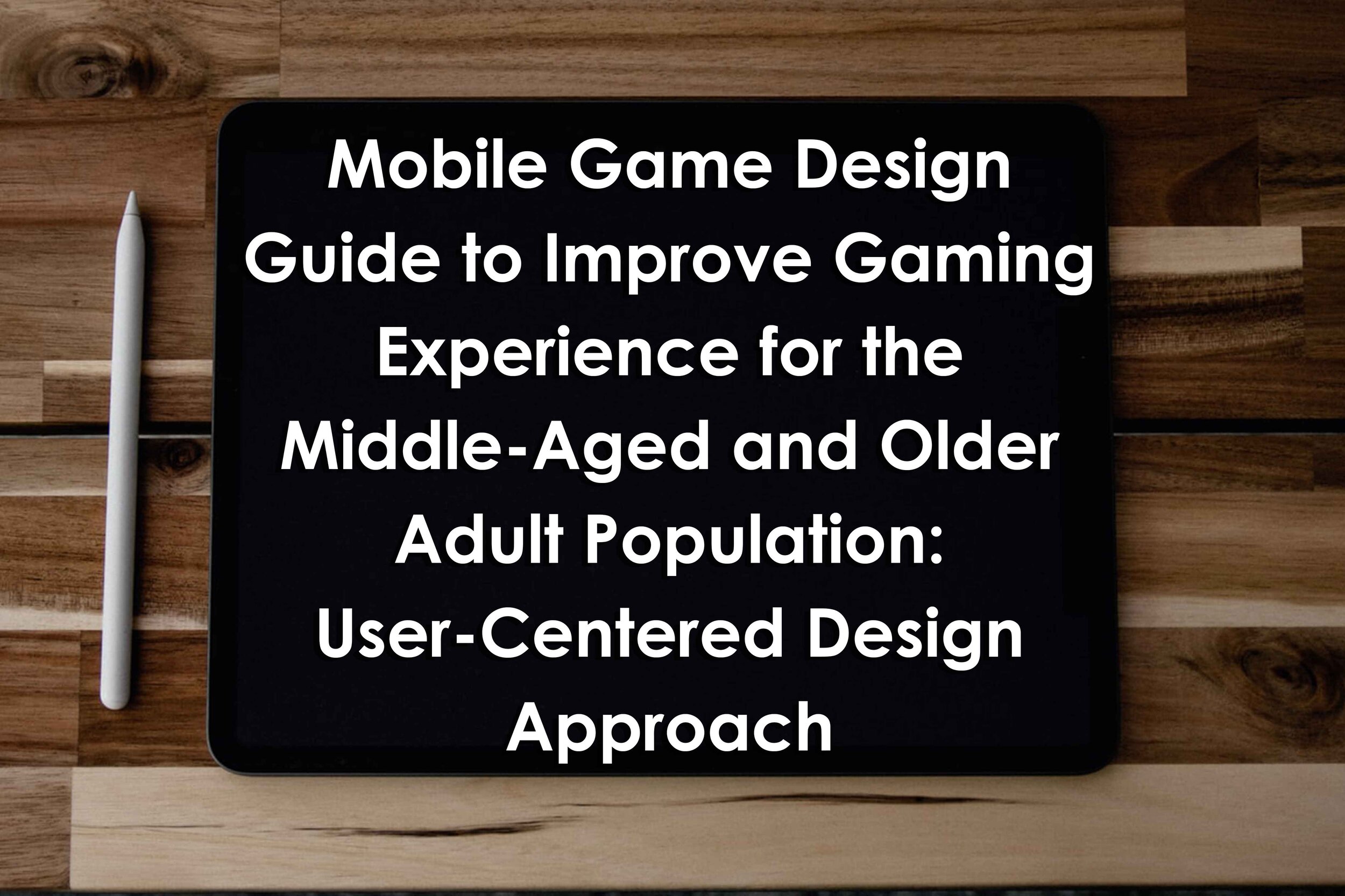Mobile Game Design Guide to Improve Gaming Experience for the Middle-Aged and Older Adult Population: User-Centered Design Approach
Mobile Game Design Guide to Improve Gaming Experience for the Middle-Aged and Older Adult Population: User-Centered Design Approach
Mobile Game Design Guide to Improve Gaming Experience for the Middle-Aged and Older Adult Population: User-Centered Design Approach
By Seyeon Lee, Hyunyoung Oh, Chung-Kon Shi, and Young Kim Doh
Abstract
“Background: The number of older adult gamers who play mobile games is growing worldwide. Earlier studies have reported that digital games provide cognitive, physical, and socioemotional benefits for older adults. However, current mobile games that understand older adults’ gameplay experience and reflect their needs are very scarce. Furthermore, studies that have analyzed older adults’ game experience in a holistic manner are rare. Objective: The purpose of this study was to suggest mobile game design guidelines for adults older than 50 years from a holistic gaming experience perspective. Adopting a human-centric approach, this study analyzes middle-aged and older adults’ gameplay experience and suggests practical design guides to increase accessibility and satisfaction. Methods: We organized a living laboratory project called the “Intergenerational Play Workshop.” In this workshop, 40 middle-aged and older adults (mean age 66.75 years, age range 50-85 years) played commercial mobile games of various genres with young adult partners for 1 month (8 sessions). Using a convergent parallel mixed-method design, we conducted a qualitative analysis of dialogue, game diaries, and behavioral observations during the workshop and a quantitative analysis of the satisfaction level of the game elements for the mobile games that they played. Results: This project was active from April 2019 to December 2021, and the data were collected at the workshops from July 1 to August 28, 2019. Based on the identified themes of positive and negative experiences from the qualitative data, we proposed 45 design guides under 3 categories: (1) cognitive and physical elements, (2) psychological and socioemotional elements, and (3) consumption contextual elements. Our empirical research could reaffirm the proposals from previous studies and provide new guidelines for improving the game design. In addition, we demonstrate how existing commercial games can be evaluated quantitatively by using the satisfaction level of each game’s elements and overall satisfaction level. Conclusions: The final guidelines were presented to game designers to easily find related information and enhance the overall understanding of the game experience of middle-aged and older adults.”
Reference
Lee, S., Oh, H., Shi, C., & Doh, Y. (2021). Mobile Game Design Guide to Improve Gaming Experience for the Middle-Aged and Older Adult Population: User-Centered Design Approach. JMIR Publications, 9(2). doi:10.2196/24449 https://games.jmir.org/2021/2/e24449/
Keyword
Mobile games, older adults, middle-aged adults, design guidline, gaming experience, gamification for health, research

